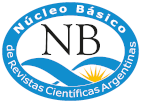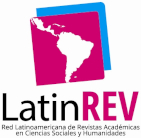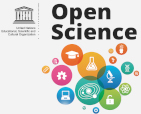The representation of Córdoba ́s urban space in contemporary TV fictional series
DOI:
https://doi.org/10.55442/tomauno.n7.2019.26201Keywords:
geographical space, dramatic space, staging, frame, editingAbstract
Since the Ley de Servicios de Comunicación Audiovisual (Law 26.522) was implemented a group of series, miniseries and telefilms started to emerge and so new scenery appear on Córdoba television screens: the city itself, previously never seen in that way.
In that renewed panorama some productions have particular forms of space representation. In Incomunicados (2018), the verbal references to the city, its streets and its constructions prevail, it's a named space. La Purga (2011) presents a fictitious but possible neighborhood, created with fragments of different sectors of the city, it’s a reconstructed space. And La chica que limpia (2017) modifies the use and functionalities of certain iconic buildings of the city according to its narrative needs, it's a resignified space.
That geographical space is revealed by certain resources of the audiovisual language. While La chica que limpia stands out the continuity through the use of the sequence plane, the technique of the creative geography of Kuleshov in La Purga or the jump cut in Incomunicados reveal a significant idea of discontinuity.
Downloads
References
Aumont, J., Bergala, A., Marie, M. y Vernet, M. (2008). Estética del Cine. Espacio fílmico, montaje, narración, lenguaje. Buenos Aires, Argentina: Ediciones Paidós.
Bordwell, D. y Thompson, K. (1995). El arte cinematográfico. Una introducción. Buenos Aires, Argentina: Ediciones Paidós.
Casetti, F. y Di Chio, F. (1998). Cómo analizar un filme. Barcelona, España: Editorial Paidós.
Chion, M. (1993). La audiovisión: Introducción a un análisis conjunto de la imagen y sonido. Barcelona, España: Editorial Paidós.
Curatitoli, C., Seco, J. y Trioni Bellone, C. (2017). La distancia adecuada (Desarmar un paisaje). En La imagen imaginada. Nueva ficción televisiva en los territorios nacionales. Villa María, Argentina: Universidad Nacional de Villa María.
Gámir Orueta, A. y Valdés, C. (2007). Cine y geografía: espacio geográfico, paisaje y territorio en las producciones cinematográficas. Madrid, España: Universidad Carlos III.
Gaudreault, A. y Jost, F. (2001). El relato cinematográfico. Cine y narratología. Barcelona, España: Editorial Paidós.
Marimón, J. (2014). El montaje cinematográfico. Del guión a la pantalla. Barcelona, España: Ediciones de la Universidad de Barcelona.
Martin, M. (2002). El lenguaje del cine. Barcelona, España: Gedisa.
Saitta, C. (2014). Música, cine, pedagogía, entre otros. Morelia, México: Centro Mexicano para la Música y las Artes Sonoras.
Segato, R. (2007). La nación y sus otros: raza, etnicidad y diversidad religiosa en tiempos de Políticas de la Identidad. Buenos Aires, Argentina: Prometeo Libros.
Filmografía
Combina, L. (Director) (2017). La chica que limpia [serie de televisión]. Argentina: Germina Films.
Rosa, C. y Brusa, P. (Directores) (2001). La Purga [serie de televisión]. Argentina: Garabato Animaciones, Prisma Cine, INCAA.
Vidal, R. (Director) (2018). Incomunicados [serie de televisión]. Argentina: Muchas Manos Films.
Downloads
Published
Issue
Section
License
LicenseThis work is licensed under Creative Commons Attribution-NonCommercial-NoDerivs 2.5 Argentina .


































